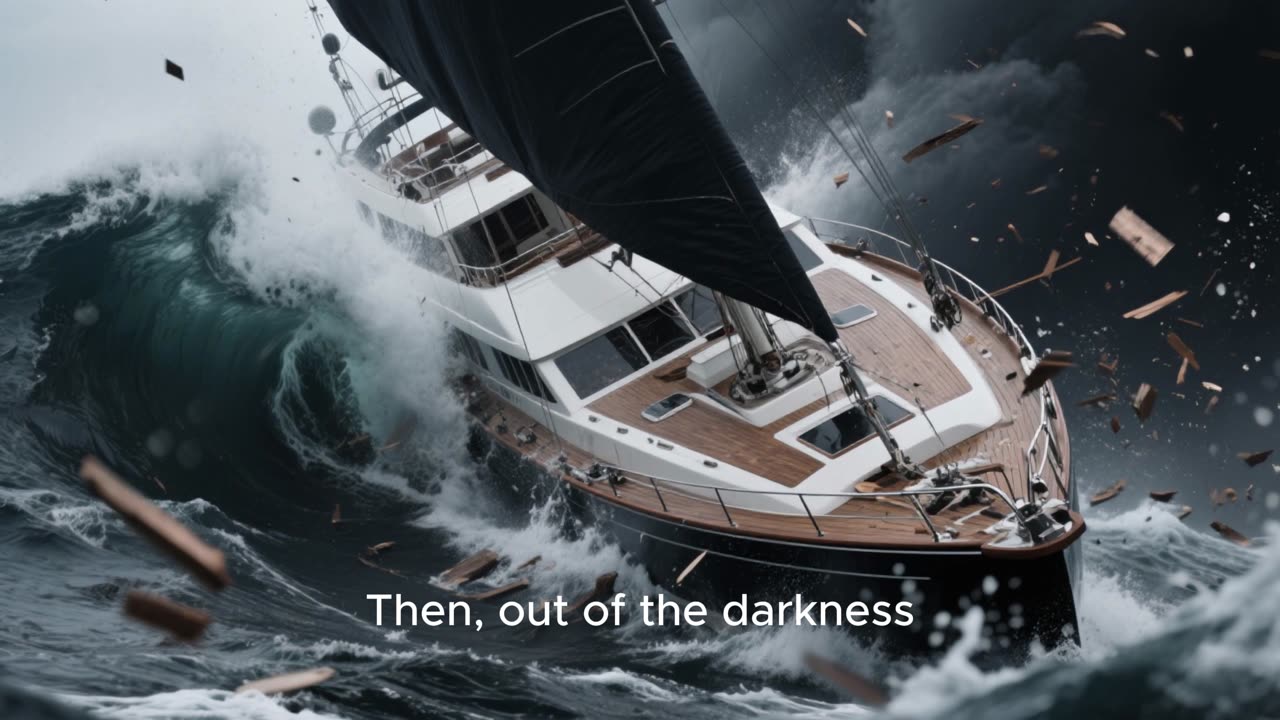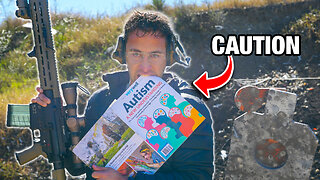Premium Only Content

Alone in the Ocean
The Story of Tami Oldham’s 41 Days Adrift
The Pacific Ocean was calm that morning, a vast blue mirror stretching endlessly in every direction. The sailboat Hazana cut gently through the waves, its white sails glowing under the sun. Onboard were Tami Oldham, a 23-year-old American adventurer, and her fiancé, Richard Sharp, a skilled British sailor. They had been hired to deliver the yacht from Tahiti to San Diego — a journey of more than four thousand miles. It was supposed to be the adventure of a lifetime, a voyage of freedom and discovery. But the ocean has a way of changing its mood without warning.
For the first few weeks, life at sea was paradise. They fished, cooked simple meals on deck, and slept under a sky so full of stars it felt endless. The trade winds carried them steadily north, and the radio crackled with weather reports that promised calm. Then, one afternoon in October 1983, everything changed. The radio picked up a storm warning — a tropical depression was moving fast across their route. They decided to adjust their course, but within hours, the wind began to howl. The sea rose and twisted, and the sky turned black.
What they didn’t know was that the storm was Hurricane Raymond, one of the most powerful systems ever recorded in that region, with winds exceeding 140 miles per hour. There was no escape. The waves grew monstrous, each one taller than a building, crashing over the deck with the force of a freight train. The air was filled with the sound of breaking wood, tearing sails, and the deep roar of the ocean.
Richard tied himself to the helm, shouting for Tami to go below deck. She clung to the hatch, terrified, watching him struggle to keep control as the sea tried to tear the boat apart. Then, out of the darkness, a single wave — towering, black, and merciless — struck them broadside. The world turned upside down.
When Tami woke, everything was silent. The sun was shining again, but the boat was wrecked — its mast broken, sails shredded, and cabin flooded. Her head throbbed with pain, and when she touched it, her hand came away bloody. Richard was gone. The ropes he had tied himself with were hanging loose over the side, swaying gently in the water. She screamed his name, again and again, but there was no answer.
She was alone.
The radio was dead. The navigation equipment destroyed. Her body was bruised, her ribs aching, her mind spinning between grief and disbelief. She wanted to jump into the water and search for him, but she knew it was useless. The sea had taken him.
For two days, she lay in shock, barely moving, drifting in silence. Then, something in her changed. Maybe it was survival instinct, maybe it was Richard’s voice echoing in her mind — but she refused to die. She found a sextant, a small tool used for navigation by the stars, and with it she began to chart her position. The Hazana was still afloat, though badly damaged. She rigged a makeshift sail using broken poles and canvas and began steering toward Hawaii, more than a thousand miles away.
Her days became a rhythm of suffering and endurance. She ate peanut butter, canned fruit, and the small amount of dried food left in the lockers. She collected rainwater to drink. The sun burned her skin by day, and the nights froze her bones. Her clothes stuck to her body like salt. Her mind drifted between hallucination and clarity. Sometimes she saw Richard standing at the bow, smiling softly, guiding her hands as she steered. He wasn’t really there, but his presence kept her alive.
For forty-one days, Tami battled the ocean, exhaustion, and despair. She repaired leaks with tape and cloth, fought off dehydration, and used the stars to keep her direction. Every morning she whispered, “Just one more day.”
Finally, one morning, as the sun rose behind her, she saw a shape on the horizon — faint, distant, but real. Land. It was Hilo Harbor, Hawaii. With the last of her strength, she steered toward it, tears mixing with saltwater as the shore grew closer. When she finally reached safety, her body was skeletal, her skin burned and blistered, her hair matted with salt — but her eyes were alive. She had survived the impossible.
When rescuers found her, they could barely believe her story. Her logbook, soaked but legible, recorded her journey in shaky handwriting — a record of every day she fought to stay alive. The media called her “the woman who conquered the Pacific,” but Tami never used those words. She said softly, “The ocean doesn’t let you conquer it. It lets you live if it chooses to.”
Years later, she wrote her memoir Red Sky in Mourning, not as a tale of tragedy, but as one of love and endurance. She said she never truly felt alone, that Richard had been with her in spirit every mile of that endless ocean. Her survival became a symbol of resilience — proof that even when everything is lost, the will to live can still find a direction.
She once said, “When I looked out at that horizon, it wasn’t hope I saw — it was Richard’s promise that I’d make it home.”
And she did.
-
 10:23
10:23
TheSaltyCracker
17 hours agoMuslims Immediately Threaten New Yorkers After Zohran Win
34.5K445 -
 18:40
18:40
Actual Justice Warrior
17 hours agoMamdani Pledges To DESTROY New York
21.3K65 -
 28:53
28:53
iCkEdMeL
17 hours ago $0.03 earnedBREAKING: 9 DEAD After UPS Plane BURSTS Into Fireball at Louisville Airport
28.5K7 -
 20:52
20:52
Professor Nez
20 hours agoThe TRUTH is Actually WORSE than we Thought...
19.5K23 -
 8:59
8:59
MattMorseTV
19 hours ago $0.06 earnedTrump’s DIRE WARNING to the Senate GOP.
79.2K84 -
 2:13:33
2:13:33
Side Scrollers Podcast
21 hours agoAsmongold SUED for Emotional Distress + Hasan REJECTED+ INSANE Plane Crash + More | Side Scrollers
93.6K27 -
 21:39
21:39
Nikko Ortiz
4 days agoI Take A North Korean Shooting
84.7K11 -
 23:01
23:01
GritsGG
19 hours agoWarzone Solo Dubular! Last Night Time Solo???
19.5K2 -
 22:47
22:47
The Pascal Show
16 hours ago $0.05 earnedTHEY’RE HIDING EVIDENCE?! Candace Owens EXPOSES Foreign Connection In Charlie Kirk Shooting
26.9K29 -
 LIVE
LIVE
Lofi Girl
3 years agolofi hip hop radio 📚 - beats to relax/study to
276 watching